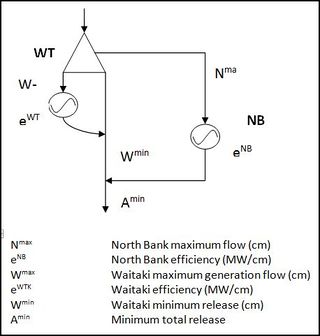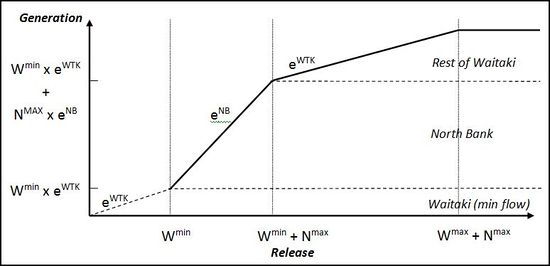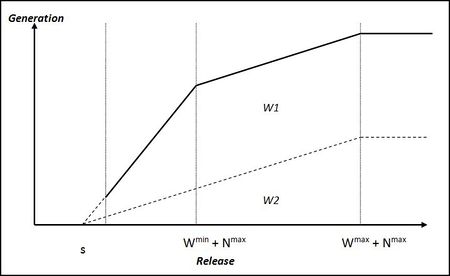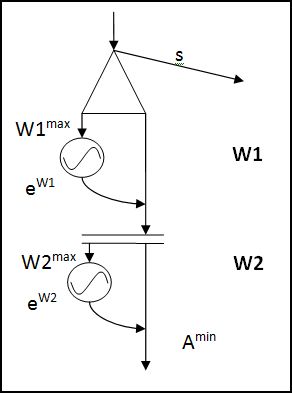Modelling North Bank Station in EMarket
The diagram to the right shows the flows, constraints and energy conversion rates in the Waitaki/North Bank system. North Bank is more efficient than Waitaki but a minimum quantity must be passed through Waitaki so the dispatch order is Waitaki (min flow) > North Bank > Rest of Waitaki. A graph of generation against total release is shown below:
This system cannot be modelled directly using EMarket as it stands because the stations are in parallel formation. However there is a way of configuring two stations in series that have exactly the same generation/release profile.
Call these stations W1 and W2. W1 and W2 together have the efficiency of north bank, but W1 reaches its capacity at the same time north bank would reach its capacity, leaving W2 to cover extra generation with the efficiency of Waitaki. In addition to this there is a diversion, represented by the value s in the graph, which removes water above both W1 and W2 and aligns the resulting efficiency curve with that of Waitaki and North Bank.
A diagram of the stations as modelled in EMarket is shown below:
The new vital parameters of this system are as follows:
If this model is run the Waitaki system as a whole will operate as if the north bank system were being explicitly modelled. The remaining difficulty is to extract the generation for North Bank and Waitaki from the outputs for W1 and W2. This can be done by taking the total generation of both stations and allocating it in the original merit order Waitaki (min flow) > North Bank > Rest of Waitaki.




